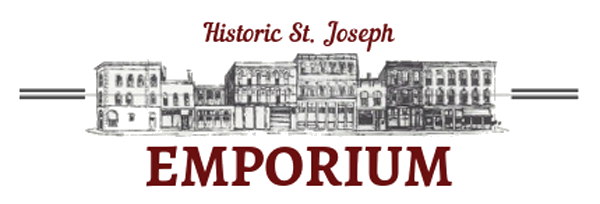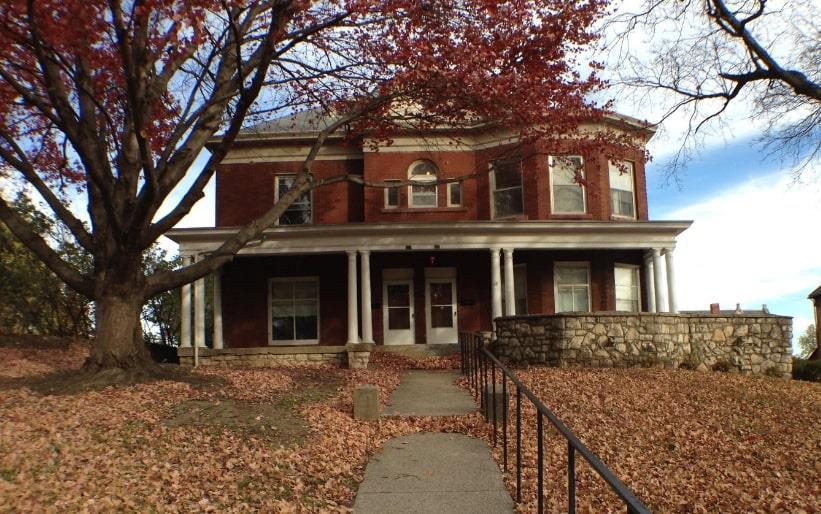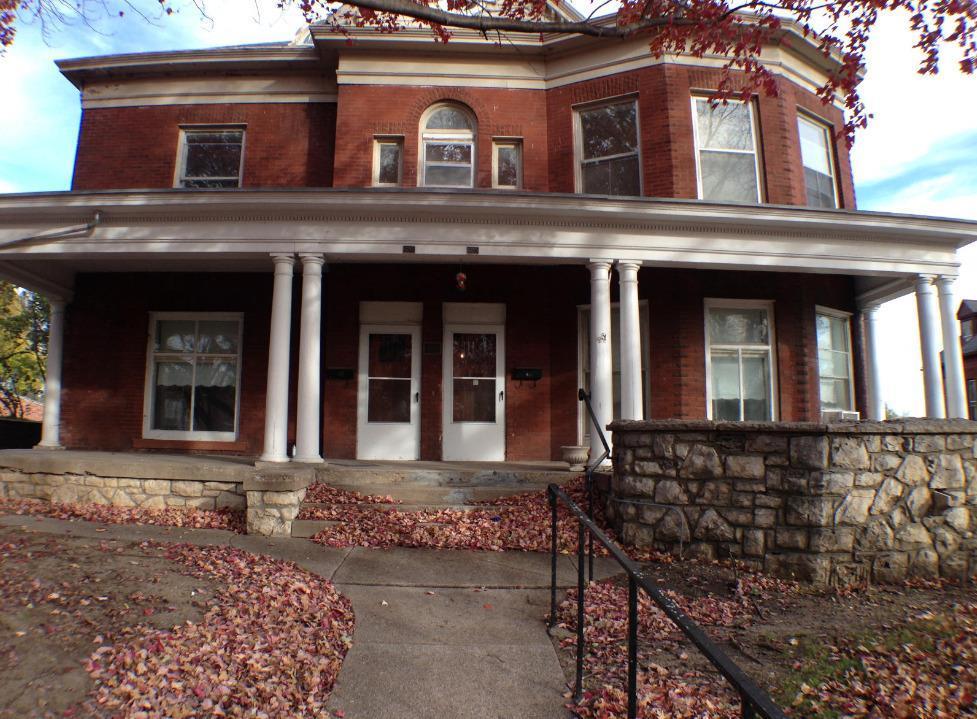Purchase Price $159,500
3 bed (each unit) · 2 bath(each unit) · 3,700 sqft
This beautiful huge historic duplex is located in the Hall Street Historic District, within walking distance of the revitalized historic downtown. Many of the rooms of this lovely house have been recently refinished with lots of built-ins, ample storage and closet space. In the upper unit there is a large screened in porch, a formal dining room with butler’s pantry. There are hardwood floors and carpet throughout. The well-appointed utility room has washer and dryer hookups. A new roof was put on in 2017.
Contact: Craig Garwood – Coldwell Banker
Call: 816-351-2000
House History& Gallery
The Ketcham-Wallace house is one of those rare gems that has been in the hands of people who love it for generations. Built in the 1890s with funds from the Hilem B. Ketcham estate, this house was home to his descendants for at least 3 generations.
The house was built in about 1894 by Sara Ketchum Wallace who was the self-appointed custodian of her father’s reputation. As is too often the case in families of great wealth, conflict broke out over the money. Hilem Ketcham and his wife Lucy built a substantial fortune in St. Joseph through their varied business endeavors. When Lucy died in 1877 leaving a personal fortune of more than $25,000 (appx. $575,000 in current dollars) Hilem was made administrator of the estate, with prominent businessmen Wm. W. Wyeth and C.D Smith standing as surety. In 1892, three of the daughters sued Mr. Wyeth alleging mismanagment of the funds (both Ketcham and Smith were dead), only Sara “declined to be a party to bringing infamy upon the name of her father.”
Hilem died in a tragic accident at home (he lived in the 500 block of N. 8th St.) in 1887 and the daughters inherited a huge fortune, presumed by many to be in the millions. It was with her share of that fortune that Sara built the handsome home at 605 N. 8th Street that was then home to her and her descendants for well over 60 years.
Sara and her sisters were prominent participants in the social whirl of upper-class St. Joseph, a position she retained following her marriage to Dr. Charles W. Wallace in January 1888. The St. Joseph Gazette-Herald wrote of them: “Dr. and Mrs. Wallace are so well known to St. Joseph people that nothing can be said for them by way of introduction. Mrs. Wallace has ever been known as one of the sweetest and best girls in the city, and will make the life of her husband bright and happy. Dr. Wallace occupies the responsible position of second assistant physician at Asylum No. 2, and has a host of friends who wish him all happiness. Dr. and Mrs. Wallace left on the evening of the wedding for New Orleans and points in the Sunny South. The presents were numerous and elegant, many of them coming from Tiffany’s, which were of the finest ever seen in the west.”
The Wallaces made their home at 605 N. 8th St. until his death in 1963. In addition to being a popular physician in town, Charles entertained political ambitions. He served as State Representative for the First District between 1926 and 1930 when he made an unsuccessful run for the State Senate. At some point during their occupancy the Wallaces divided the home in to two units to accommodate their daughter Jessamine, her husband Robert B. Orr and their children.
During her young adulthood, Jessamine and her brothers Hilen and Charles Jr. were active in the St. Joseph social scene. Ultimately both brothers became physicians and Charles lived and practiced for a time out of 605 N. 8th St. Robert Orr was a commission agent engaged in the buying and selling of grain prior to his marriage. Later he was a partner in the Wallace & Orr Farm Loan Company and Secretary of the First Trust Company.
Eventually the home was purchased by Barbara Ide who was one of the pioneers of St. Joseph preservation. It was Mrs. Ide and her daughter Susan Ide Symington who got Hall Street designated as both a local and national historic district, ensuring protection for the properties in that district as well as access to financial assistance such as the Save Our Heritage Grants.








